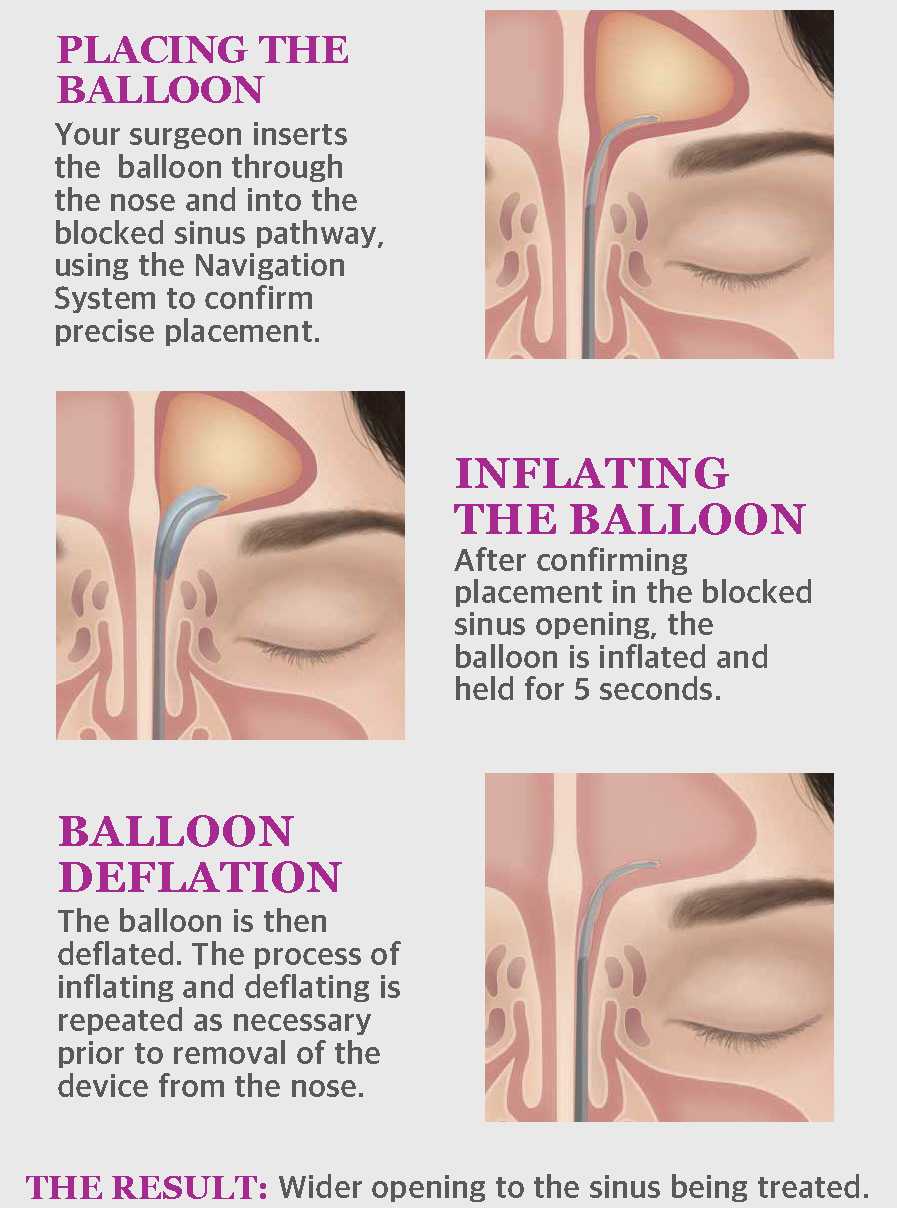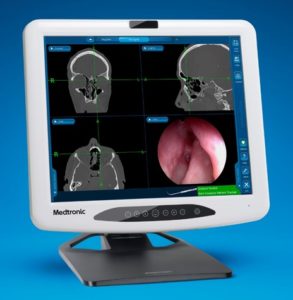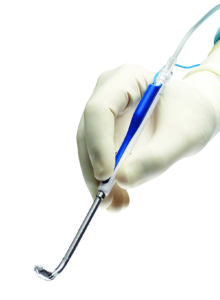As advances in technology have been adapted to the field of Rhinology, safe, effective and less invasive treatment options have been developed to treat sinusitis. Dr. Jourdy is a firm believer in the use of the most current proven technological advances; as such, he was the first fellowship trained rhinologist in Westchester County and the Hudson Valley to offer in-office balloon sinuplasty as part of his commitment to the most advanced patient care. With sub-specialty training and a practice largely dedicated to the treatment of sinus disease, Dr. Jourdy’s fund of knowledge allows him to better understand each individual patient’s unique anatomy and disease process to determine who would benefit most from newer less invasive treatment options like balloon sinuplasty. This out-patient minimally-invasive procedure has been associated with faster recovery times and lower out-of-pocket costs for eligible patients.1,2
What is the impact of sinusitis?
Roughly 31-million people suffer from sinusitis, an inflammation of the sinuses and nasal passages, sometimes due to common colds and allergies, which can become infected.3 Sinusitis causes symptoms like facial pain and pressure, headaches, nasal blockage, nasal discharge, post-nasal drip, cough, decreased sense of smell, and fatigue; these symptoms can interfere with daily life, the ability to sleep and cause people to limit activities and even miss work.4,5
Sinusitis may be treated with antibiotics, decongestants and saline sprays. However, when these options fail to relieve symptoms, sinus surgery has been shown to improve symptoms and restore quality of life, including reducing headaches, work/school time missed, frequency of doctor/nurse visits and acute infections.5,6,7
What is Balloon Sinuplasty?
Balloon sinuplasty is a procedure whereby the natural openings to the sinuses are dilated to treat sinusitis, much the same way that blocked arteries are treated during balloon angioplasty. Unlike traditional sinus surgery, balloon sinuplasty does not involve cutting or removal of bone and soft tissue and can be performed in the office under local anesthesia, with minimal discomfort, so that there is no need to go to an operating room and undergo general anesthesia.
During the procedure, a small probe with an overlying balloon is carefully passed through the patient’s nasal cavity and into the sinus opening to be enlarged. Correct placement of the balloon is then confirmed inside the often blocked or narrowed natural opening to the sinus using a real-time navigation system, much like a GPS system based on each individual patient’s CAT scan. The balloon is then inflated to open the sinus passageways and help to better the drainage of the mucus that often builds up in patients suffering from sinusitis.
Why Choose Balloon Sinuplasty?
Balloon sinuplasty offers numerous benefits for patients including following:
- Anesthesia – In-office balloon sinuplasty is performed under local anesthesia, eliminating the need for general anesthesia which can be riskier. Furthermore, some patients may not be healthy enough to tolerate general anesthesia safely.
- Recovery – In-office balloon sinuplasty often has faster recovery times than traditional sinus surgery. Most patients can return to work within a few days.
Balloon Technology
Dr. Jourdy uses the most up-to-date balloon sinuplasty technology, utilizing an in-office navigation system identical to the one used in the operating room, allowing for real-time positioning information (much like a GPS navigation system) that can help confirm proper placement of the balloon during the procedure with extreme accuracy. Using the navigation system allows for safer work in and around the sinuses and away from critical structures during the procedure.
Results
Numerous clinical studies have demonstrated that balloon sinuplasty is a safe tool in the management of sinusitis. These devices are FDA approved and the American Rhinologic Society and the American Academy of Otolaryngology-Head and Neck Surgery have favorable position statements concerning the use of this technology.
Procedure
If you are a candidate for this procedure, you will be carefully anesthetized with topically applied liquids and gels. After you are fully anesthetized with topical techniques, injectable anesthetics may also be used to assure maximum comfort during the procedure. Once it is determined that you have been fully anesthetized, the procedure begins with dilation of the sinus(es).
For supplementary information on the NuVent™ EM Sinus Dilation Systems please visit www.sinusitissurgery.com
References:
- Bikhazi N, Light J, Truitt T, Schwartz M, Cutler J, and REMODEL Study Investigators. Standalone balloon dilation versus sinus surgery for chronic rhinosinusitis: A prospective, multicenter, randomized, controlled trial with 1- year follow-up. Am J Rhinol Allergy. 2014;28(4):323-329.
- Silvers SL. Practical techniques in office-based balloon sinus dilation. Operative Techniques Otolaryngol. 2014; 25:206-212.
- Rosenfeld RM, Andes D, Bhattacharyva N, et al. Clinical practice guidelines: Adult sinusitis. Otolaryngol Head Neck Surg. 2007;137:S1-S31.
- Data on File. Medtronic, Inc.
- American Rhinologic Society. Adult Sinusitis. http://care.american- rhinologic.org/adult_sinusitis. Accessed March 8, 2017.
- Chandra RK, Kern RC, Cutler JL, et al. REMODEL larger cohort with long-term outcomes and meta-analysis of standalone balloon dilation studies. Laryngoscope. 2016;126(1):44-50.
- American Rhinologic Society. Sinusitis Q&A. http://care.american- rhinologic.org/sinusitis_q_a? Accessed March 8, 2017.




